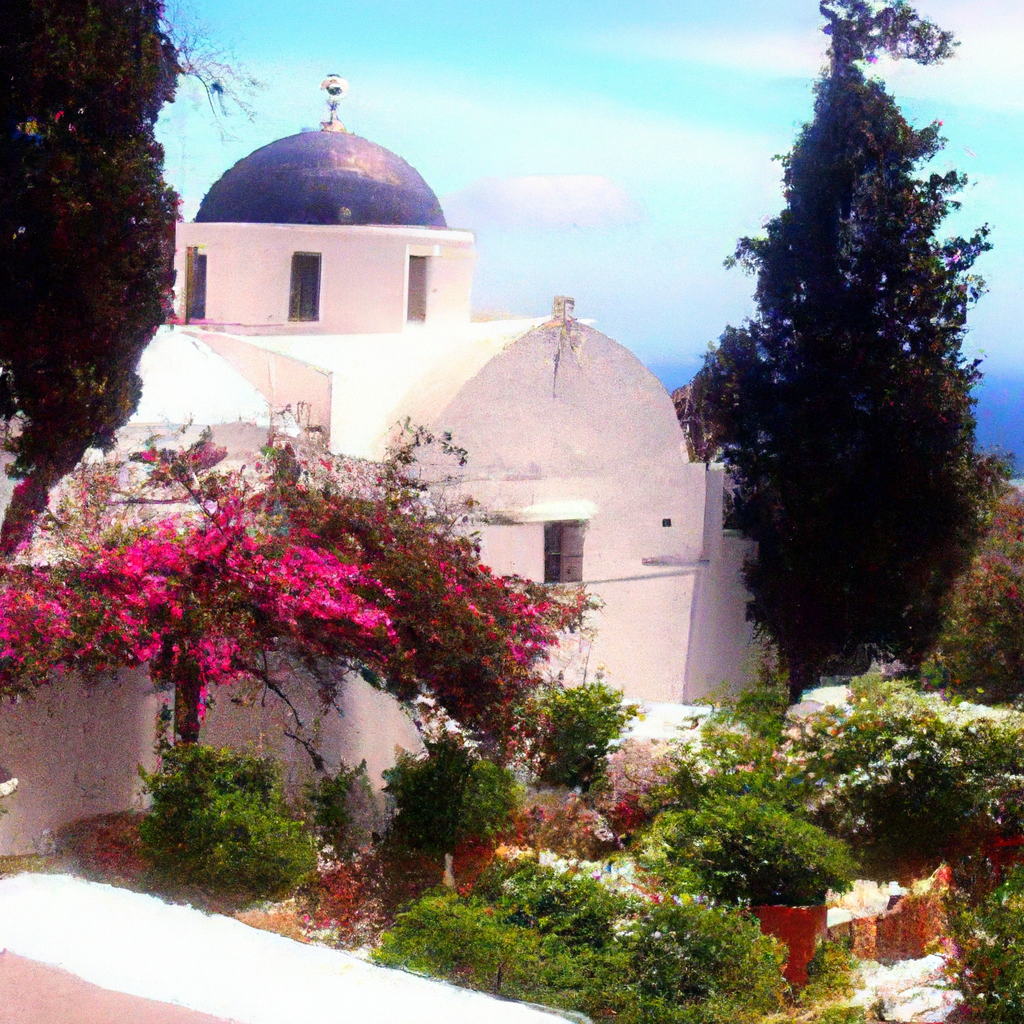Imagine stepping back in time and immersing yourself in the charm and tranquility of traditional Greek villages. Nestled on the picturesque island of Naxos, these hidden gems offer a glimpse into the rich history and culture of the region. From the maze-like streets of Apiranthos to the stunning views of Halki, each village has its own unique story to tell. Wander through ancient cobblestone pathways, marvel at well-preserved Venetian towers, and savor the authentic local cuisine. With their untouched beauty and warm hospitality, the traditional villages of Naxos are waiting to be explored.
Overview of Naxos
Naxos is one of the most stunning Greek islands, known for its rich history, vibrant culture, and traditional villages. Located in the South Aegean Sea, it is the largest island in the Cyclades archipelago. Naxos offers a diverse range of experiences for visitors, from exploring ancient ruins to indulging in its picturesque landscapes and charming villages. The island’s geographical location, historical significance, and cultural importance make it a captivating destination for travelers seeking an authentic Greek experience.
Geographical location of Naxos
Naxos is situated in the heart of the Aegean Sea, approximately 200 kilometers southeast of Athens. As the largest island in the Cyclades, it covers an area of around 428 square kilometers. Naxos boasts a varied landscape, with its coastline showcasing sandy beaches, rugged cliffs, and crystal-clear turquoise waters. Inland, the island is characterized by rolling hills, fertile valleys, and impressive mountains. This diverse geography provides a magnificent backdrop for its traditional villages, each with its own unique charm and allure.
Historical significance of Naxos
With a history dating back thousands of years, Naxos holds great historical significance. The island played a crucial role during the ancient Greek period, as it was a cultural and economic hub of the Cyclades. Naxos was renowned for its prosperous marble industry, which contributed to the island’s wealth and influence. Historical artifacts and ruins, such as the Temple of Apollo and the Portara monument, speak volumes about the island’s rich past. Naxos has witnessed the rise and fall of many civilizations, leaving behind a legacy that continues to captivate visitors to this day.
Cultural and traditional importance of Naxos
Naxos is deeply rooted in Greek culture and tradition, making it a treasure trove for those seeking an authentic experience. The island’s locals take immense pride in preserving their heritage, and this can be witnessed in the various cultural events and traditions that are celebrated throughout the year. From lively music and dance festivals to religious processions and culinary delights, Naxos offers a true immersion into Greek culture. The traditional villages of Naxos are a testament to this cultural importance, as they have retained their unique character and charm over the centuries.
Exploring Apiranthos
Apiranthos is a captivating village nestled in the mountains of Naxos. With its rich history and traditional architecture, it offers a unique glimpse into the island’s past.
Geographical features of Apiranthos
Apiranthos is situated at an elevation of 650 meters on the slopes of Mount Fanari. Its mountainous location provides breathtaking views of the surrounding landscape, including the Aegean Sea and neighboring islands. The village is surrounded by verdant valleys and lush vegetation, creating a serene and picturesque setting.
Historical background of Apiranthos
Apiranthos has a fascinating history dating back to ancient times. The village was founded during the Geometric period and has been continually inhabited ever since. Over the centuries, it has endured various conflicts and invasions, including those by Byzantines, Venetians, and Ottomans. Despite these challenges, Apiranthos has managed to preserve its cultural heritage and architectural integrity, giving visitors a glimpse into the past.
Traditional architecture and buildings in Apiranthos
The village of Apiranthos is renowned for its traditional architecture, with whitewashed houses adorned with colorful doors and window frames. Narrow cobblestone streets wind their way through the village, leading to charming squares and hidden courtyards. Traditional stone and marble buildings, some dating back several centuries, showcase the craftsmanship and attention to detail of the local artisans. Exploring Apiranthos is like stepping back in time, where the past blends seamlessly with the present.
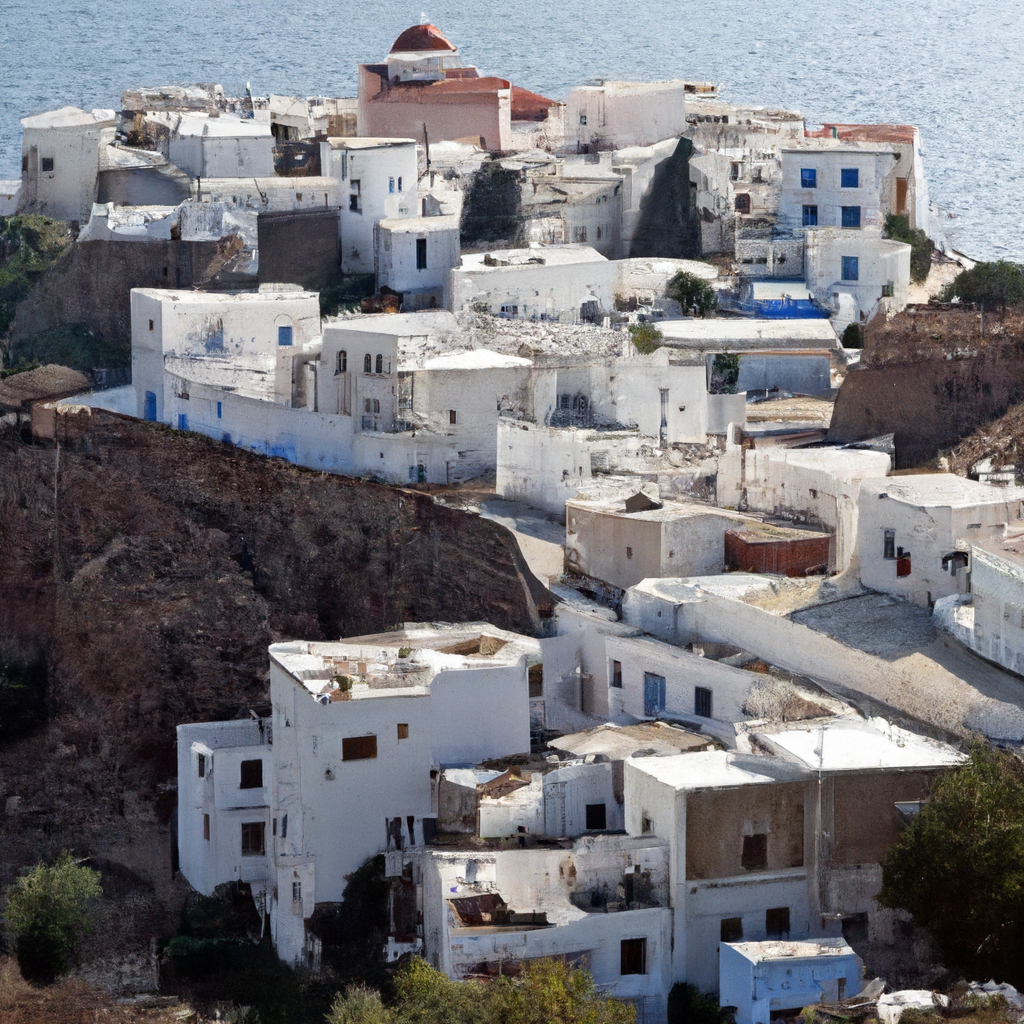
Visiting Filoti
Nestled in the heart of Naxos, the village of Filoti is a hidden gem that offers a blend of natural beauty and historical significance.
Location and landscape of Filoti
Filoti is situated in the island’s center, nestled at the foot of Mount Zas, the highest peak in the Cyclades. Its location provides a stunning backdrop of majestic mountains, lush valleys, and olive groves as far as the eye can see. The village is surrounded by fertile land, making it an agricultural hub with an abundance of vineyards, orchards, and traditional farms.
Historical relevance of Filoti
Filoti has a long and storied history, with evidence of settlement dating back to the Mycenaean period. The village played a significant role during the Venetian era, as it served as the administrative center of the island. Its strategic location, surrounded by hills and offering panoramic views, made it an ideal stronghold. Today, remnants of its historical past can be witnessed in the traditional architecture and historical landmarks scattered throughout the village.
Famous landmarks and attractions in Filoti
Filoti is home to several famous landmarks that attract visitors from near and far. The picturesque Church of Panagia (Virgin Mary) dominates the village’s skyline, with its striking bell tower and impressive frescoes. The Venetian tower, known as the “Barotsi Tower,” stands as a reminder of Filoti’s fortified past. Exploring the village’s winding streets, visitors will discover charming taverns, traditional cafes, and local shops selling handmade crafts and products, allowing for an authentic and immersive experience.
Discovering Halki
Hidden amidst the green hills of Naxos, the village of Halki exudes an unparalleled charm, blending natural beauty with a rich cultural heritage.
Geographic characteristics of Halki
Halki is nestled in the Tragea Valley, in the heart of Naxos. Surrounded by rolling hills and fertile plains, the village is a delight to explore. The landscape is dotted with quintessential Greek olive groves, vineyards, and citrus orchards, creating a picturesque setting that embodies the tranquility and beauty of the island.
Historical background of Halki
As one of the oldest settlements on the island, Halki boasts a history that spans over a millennium. During the Byzantine era, it flourished as the cultural and economic center of Naxos, and its influence continued to grow during the Venetian period. The village is rich in architectural heritage, with the remnants of ancient mansions and elegant churches still standing as a testament to Halki’s illustrious past.
Prominent cultural elements of Halki
Halki is a hub of artistic and cultural expression, reflecting the creativity and passion of the local community. The village is home to a number of art galleries, showcasing the works of talented local artists. Visitors can also immerse themselves in the captivating scents and flavors of the island by visiting the Kitron distillery, where the famous citrus liqueur is produced. Halki’s cultural heritage is further celebrated through traditional festivals, where music, dance, and local delicacies take center stage.
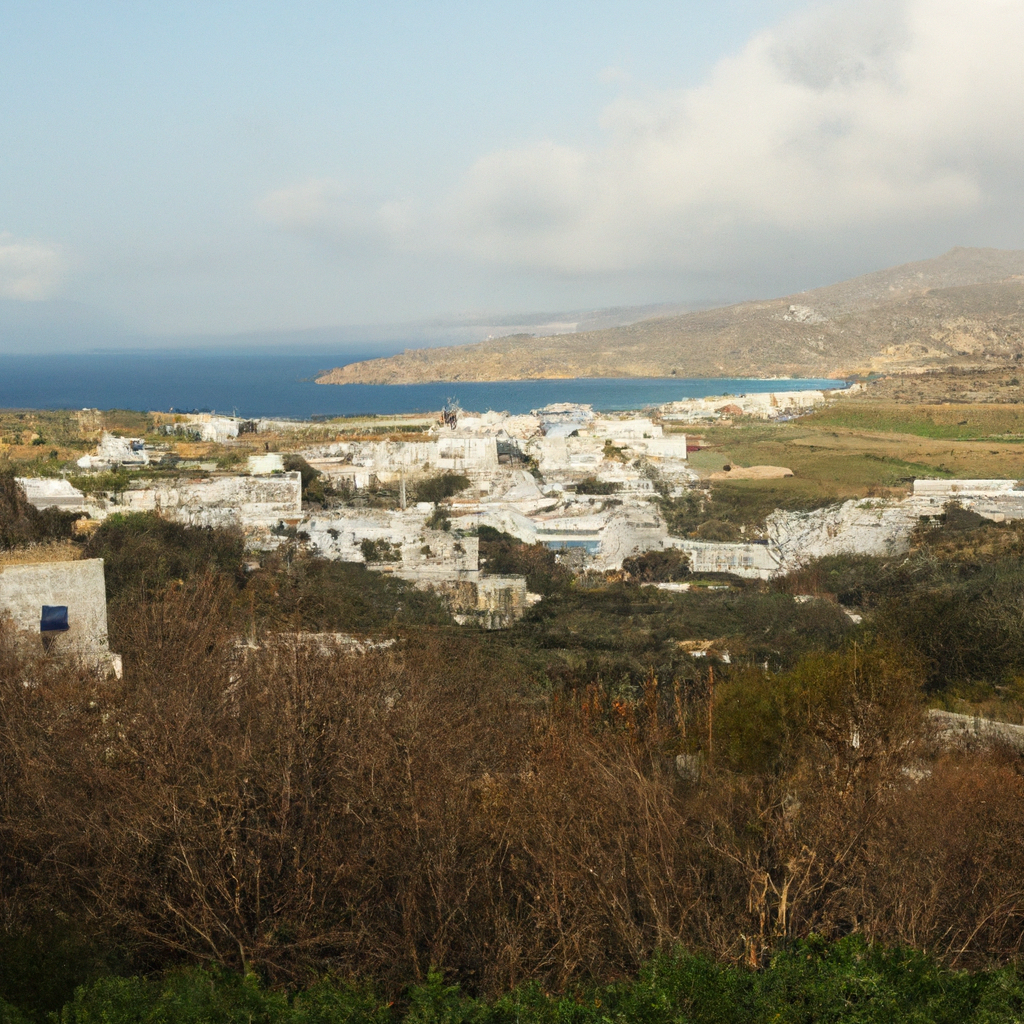
Exploring the Village of Koronos
Nestled amidst the rugged landscape of Naxos, the village of Koronos offers a unique blend of natural beauty and historical significance.
Geographical features of Koronos
Koronos is located on a hillside in the northeastern part of the island, offering breathtaking panoramic views of the surrounding valleys and the sparkling Aegean Sea. Surrounded by rocky cliffs and olive groves, the village is a haven of tranquility, inviting visitors to immerse themselves in its natural beauty.
Historical significance of Koronos
Koronos has a rich and storied history, dating back to ancient times. The village was built on the ruins of an ancient settlement, and remnants of this past can still be seen in the form of ancient walls and various archaeological finds. Koronos played a vital role during the Byzantine and Venetian eras, serving as a strategic outpost. Today, it stands as a reminder of the island’s intriguing past.
Important cultural aspects of Koronos
Koronos is known for its vibrant cultural scene, with a strong emphasis on traditional arts and crafts. The village is famous for its pottery, and visitors can witness local artisans at work, shaping clay into beautiful and unique creations. Throughout the year, Koronos hosts various cultural events, including music festivals and art exhibitions, showcasing the talents of its residents and fostering a sense of community pride.
Visiting Apeiranthos
Nestled in the mountains of Naxos, the village of Apeiranthos offers a captivating blend of historical significance, natural beauty, and traditional charm.
Location and landscape of Apeiranthos
Apeiranthos is situated at an altitude of approximately 600 meters, nestled between two imposing mountains, Fanari and Koronos. This mountainous location provides visitors with panoramic views of the surrounding landscape, including the deep blue sea and lush valleys. The village is known for its natural springs, which have contributed to the lush vegetation and vibrant flowers that adorn its streets.
Historical relevance of Apeiranthos
Apeiranthos has a rich and fascinating history that spans several centuries. The village has been inhabited since prehistoric times, and its archaeological sites reveal evidence of an advanced civilization. Apeiranthos was a center of cultural and intellectual activity during the Byzantine era, fostering the growth of literature, art, and philosophy. Today, the village stands as a testament to its enduring past, with well-preserved traditional architecture and historical landmarks that captivate visitors.
Landmarks and cultural sites in Apeiranthos
Apeiranthos is home to various landmarks and cultural sites that showcase its unique heritage. The Archaeological Museum of Apeiranthos houses a collection of artifacts dating back to the ancient times, providing insights into the village’s past. The Church of Panagia Apeiranthitissa, with its stunning frescoes and intricate woodwork, stands as a testament to the village’s devotion to religion and art. Exploring the picturesque streets of Apeiranthos, visitors will discover local taverns and craft shops, offering a taste of the village’s traditional gastronomy and handmade products.
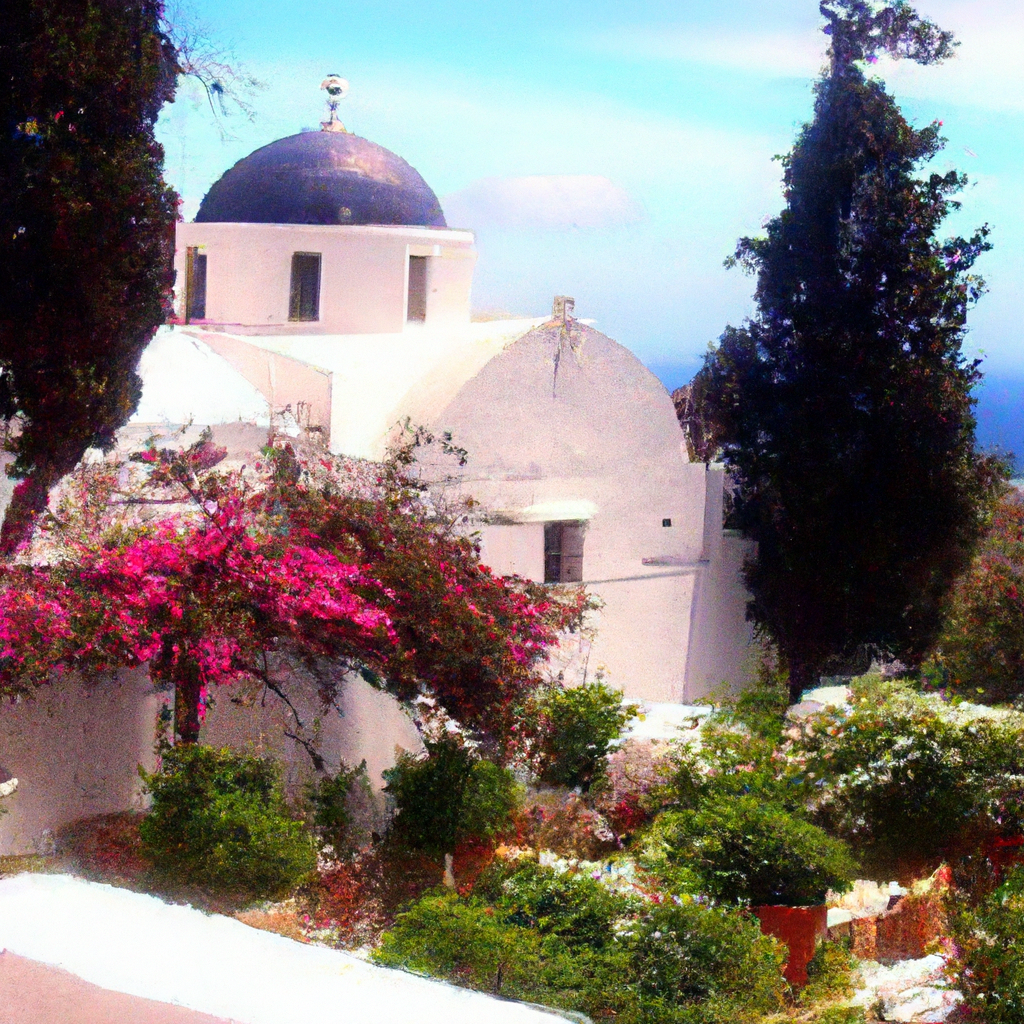
Discovering the Village of Sangri
Nestled in the heart of Naxos, the village of Sangri offers a unique blend of natural beauty, historical significance, and cultural highlights.
Geographic characteristics of Sangri
Sangri is located in the interior of Naxos, surrounded by fertile plains and rolling hills. The village is nestled amidst lush vegetation, with olive groves, vineyards, and citrus orchards painting a picturesque landscape. Its proximity to important archaeological sites, such as the Temple of Demeter and the Sanctuary of Gyroulas, adds a sense of historical grandeur to its natural beauty.
Historical background of Sangri
Sangri has a rich and intriguing history that spans thousands of years. The village was an important center during ancient times, with archaeological finds revealing its significance as a religious and administrative hub. Over the centuries, it has witnessed the rise and fall of various civilizations, contributing to its cultural heritage. Today, visitors can explore the remnants of the past through archaeological sites and historical landmarks that are scattered throughout the village.
Cultural and traditional highlights of Sangri
Sangri is deeply rooted in Greek culture and traditional customs, offering visitors a glimpse into the island’s rich heritage. The village hosts various cultural events and festivals throughout the year, where music, dance, and traditional costumes take center stage. Visitors can also indulge in the local cuisine, with traditional taverns serving authentic Naxian dishes made from locally sourced ingredients. Sangri’s close-knit community preserves its cultural traditions with a sense of pride, ensuring that its unique heritage continues to thrive.
Exploring the Village of Potamia
Nestled in the verdant valleys of Naxos, the village of Potamia charms visitors with its natural beauty, historical significance, and notable attractions.
Location and landscape of Potamia
Potamia is located in the eastern part of Naxos, surrounded by picturesque valleys and rolling hills. The village is situated near the Tragea Valley, known for its fertile land and abundant water sources. The landscape is adorned with verdant olive groves, citrus orchards, and vineyards, creating a tranquil and idyllic setting.
Historical significance of Potamia
Potamia has a rich history that stretches back to ancient times. The village played a significant role during the Byzantine era, serving as a prosperous agricultural center. Over the centuries, it witnessed the influences of various civilizations, including the Venetians and Ottomans. Historical landmarks and architectural gems can still be found throughout Potamia, providing a glimpse into its illustrious past.
Notable features and attractions in Potamia
Potamia is home to several notable attractions that are sure to enchant visitors. The Church of Panagia Drosiani, a charming Byzantine church adorned with intricate frescoes, is a must-see for art and history enthusiasts. The Kouros of Potamia, a magnificent statue dating back to the 6th century BC, stands as a silent sentinel to the village’s ancient past. Exploring Potamia’s winding streets, visitors will discover traditional taverns, where they can savor the flavors of the island, and local shops selling handmade crafts and products, allowing for an immersive cultural experience.
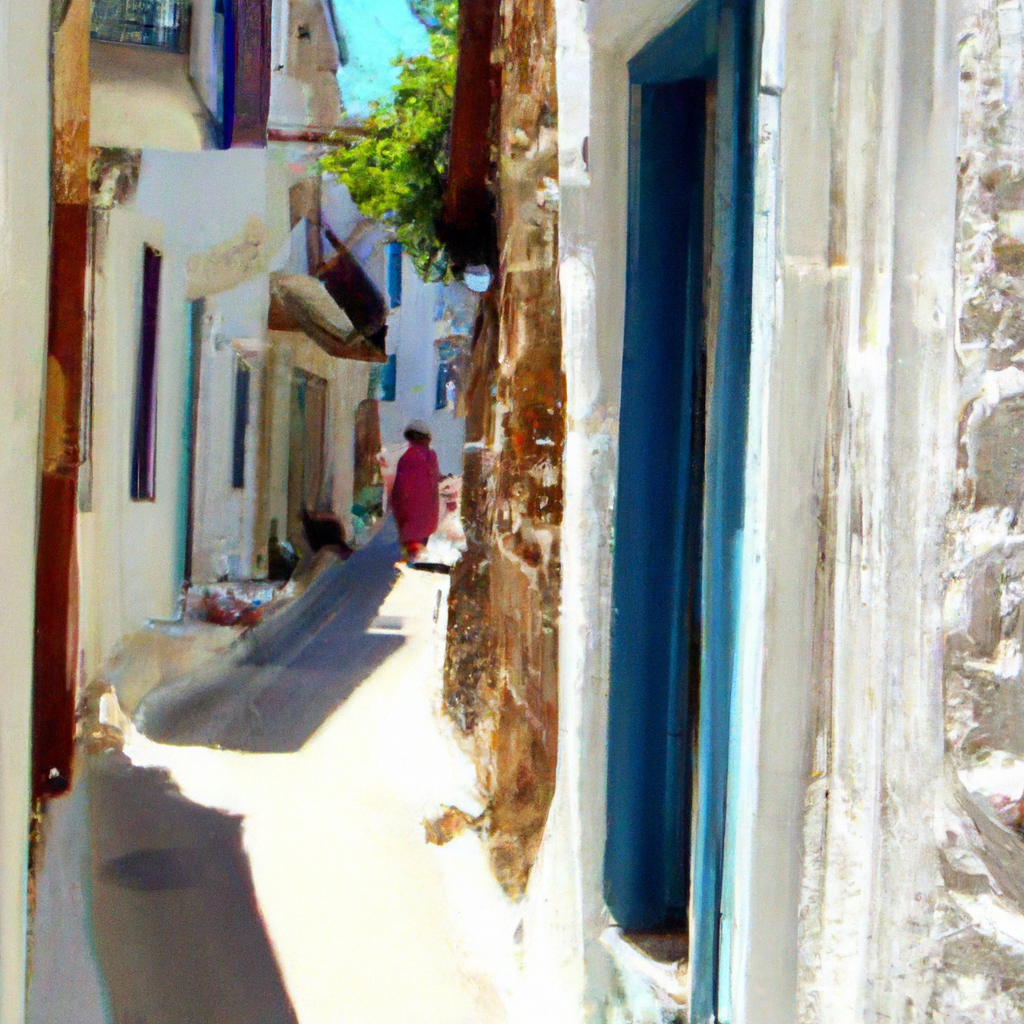
Visiting Koronida
Nestled amidst the rugged mountains of Naxos, the village of Koronida offers a blend of natural beauty, historical charm, and traditional architecture.
Geographical features of Koronida
Koronida is located in the southeastern part of Naxos, nestled amidst the peaks and valleys of the mountainous landscape. The village offers breathtaking panoramic views of the surrounding hills and the shimmering Aegean Sea. Its remote location lends a serene and peaceful ambiance, making it an ideal retreat for nature lovers and those seeking tranquility.
Historical background of Koronida
Koronida has a rich history dating back to ancient times. The village was strategically situated, serving as a defensive outpost during the Byzantine and Venetian periods. Over the centuries, various civilizations have left their mark on Koronida, and remnants of its storied past can still be seen in its traditional architecture. Exploring the village is like stepping back in time, with its narrow cobblestone streets, stone houses, and ancient churches evoking a sense of history and charm.
Traditional architecture and landmarks in Koronida
Koronida is known for its traditional architecture, which preserves the village’s unique character and cultural heritage. The houses, built with local stone, exhibit the craftsmanship and attention to detail that is characteristic of the region. The Church of Agios Petros, with its distinctive bell tower and stunning frescoes, is a prominent landmark in Koronida. Exploring the village’s narrow streets, visitors will discover hidden squares, charming cafes, and local taverns, where they can enjoy the warm hospitality and traditional cuisine of the locals.
Discovering Melanes
Nestled amidst the lush valleys and rolling hills of Naxos, the village of Melanes offers a captivating blend of natural beauty, historical relevance, and cultural highlights.
Geographic characteristics of Melanes
Melanes is located in the central part of Naxos, surrounded by picturesque landscapes and flourishing vegetation. The village is nestled amidst fertile valleys, offering a tranquil retreat from the bustling coastal areas. Olive groves, vineyards, and citrus orchards dot the landscape, adding to the charm and serenity of Melanes.
Historical relevance of Melanes
Melanes has a fascinating history that stretches back to ancient times. The village was once a prominent center during the ancient Greek period, with remnants of ancient temples and statues bearing witness to its former glory. The famous Kouros statues, monumental ancient sculptures, can be found scattered throughout the area, standing as lasting testaments to Melanes’ historical significance.
Cultural and traditional highlights of Melanes
Melanes is deeply rooted in Greek culture and tradition, offering visitors a glimpse into the island’s rich heritage. The village hosts various cultural events and festivals throughout the year to celebrate its cultural legacy. Traditional dances, music performances, and local delicacies are showcased during these vibrant events, creating a lively and immersive experience for visitors. Exploring Melanes allows visitors to witness the skilled craftsmanship of local artisans, as they produce traditional crafts and artwork unique to the region.
